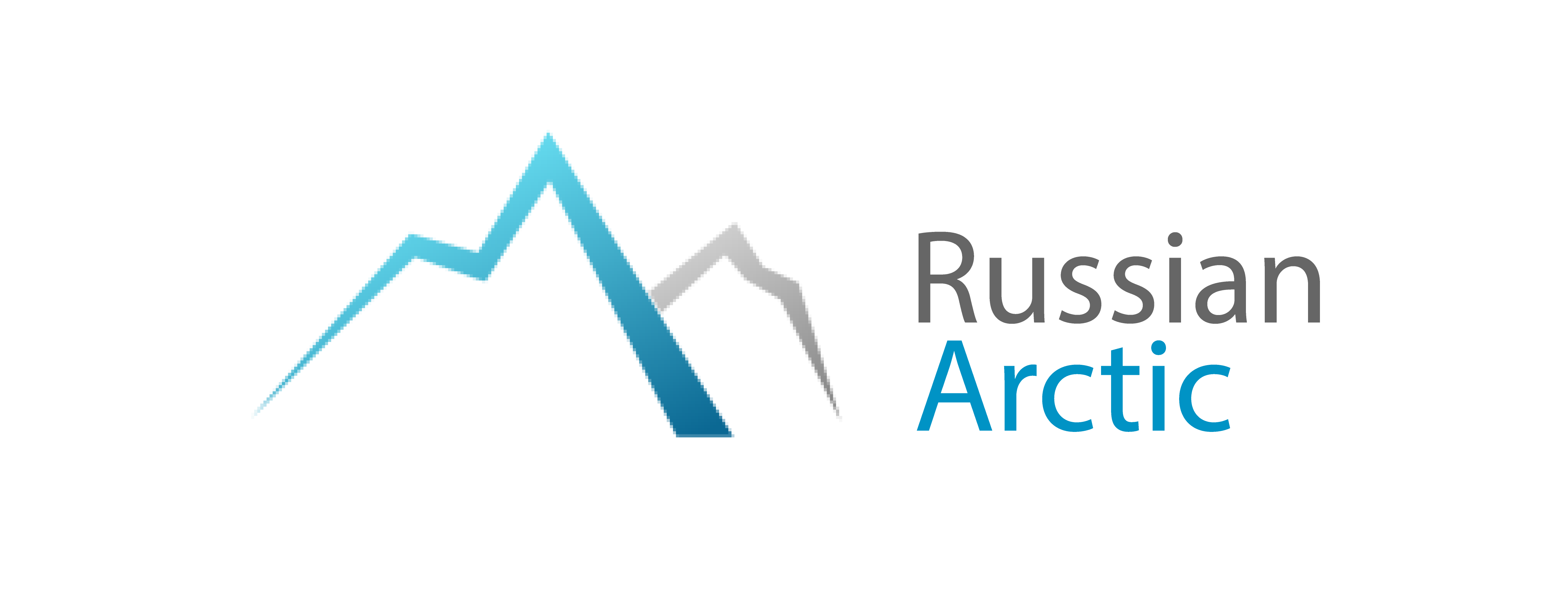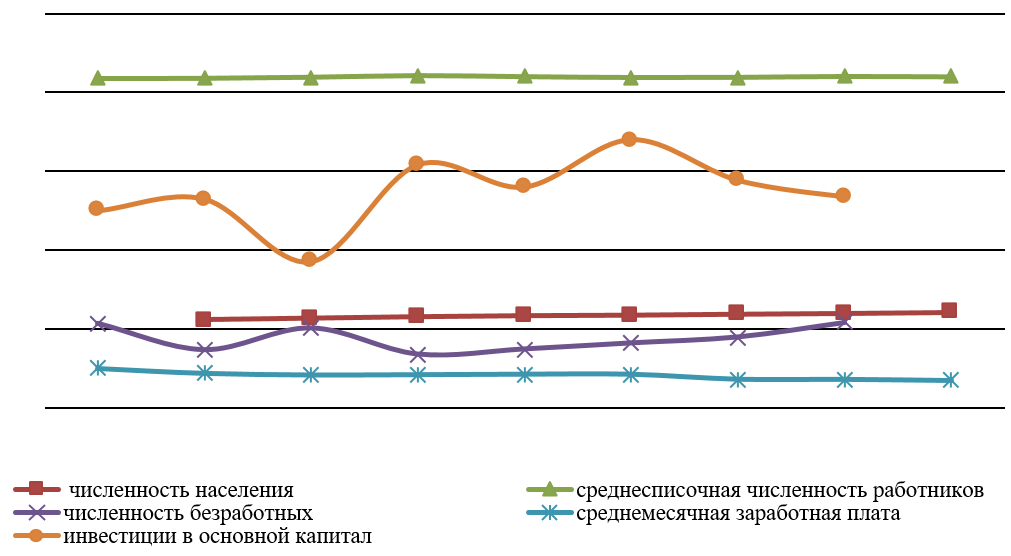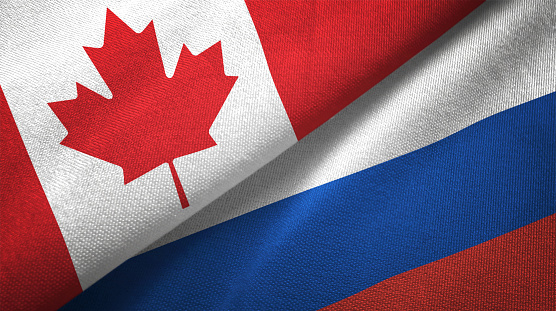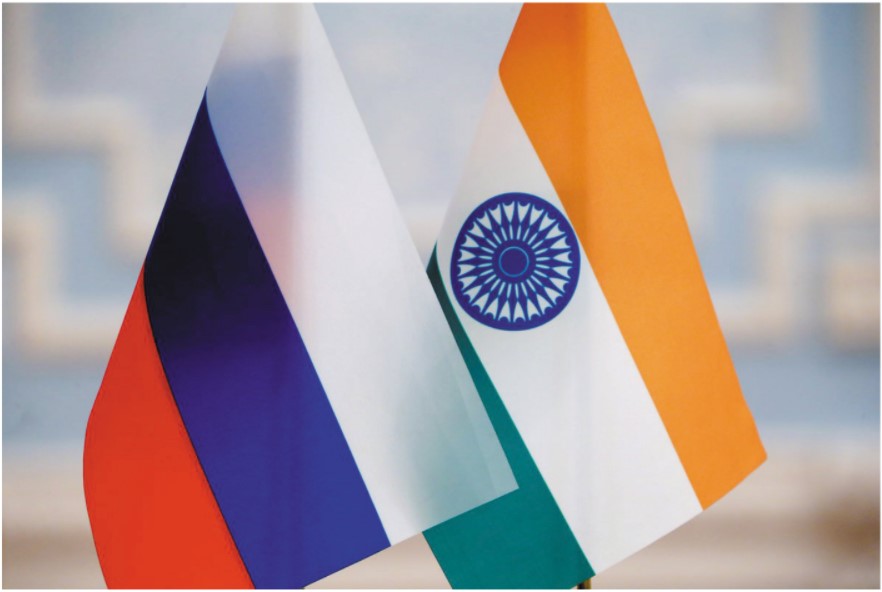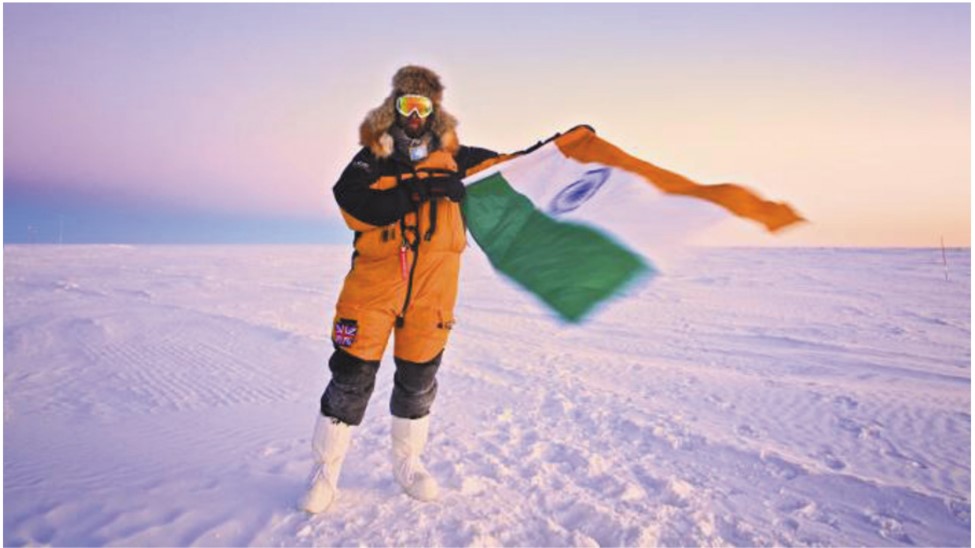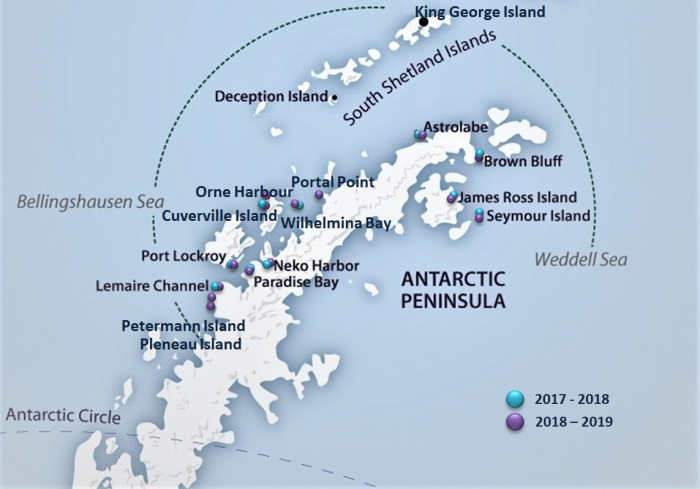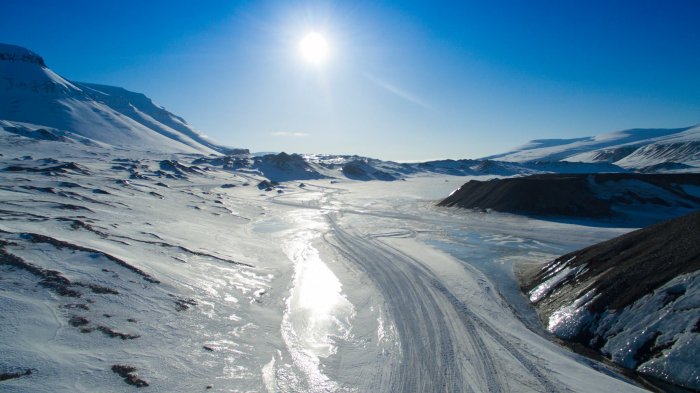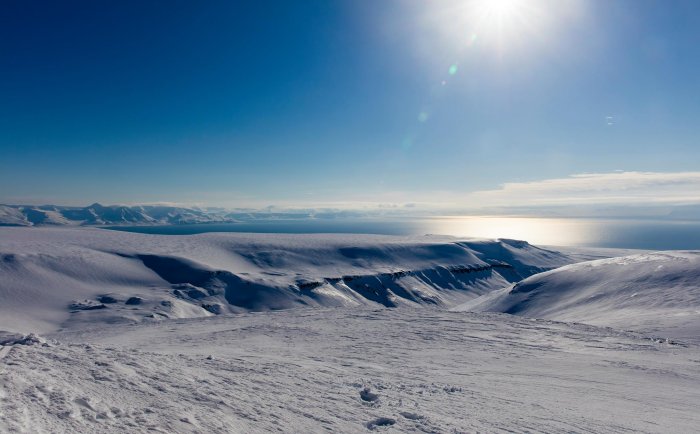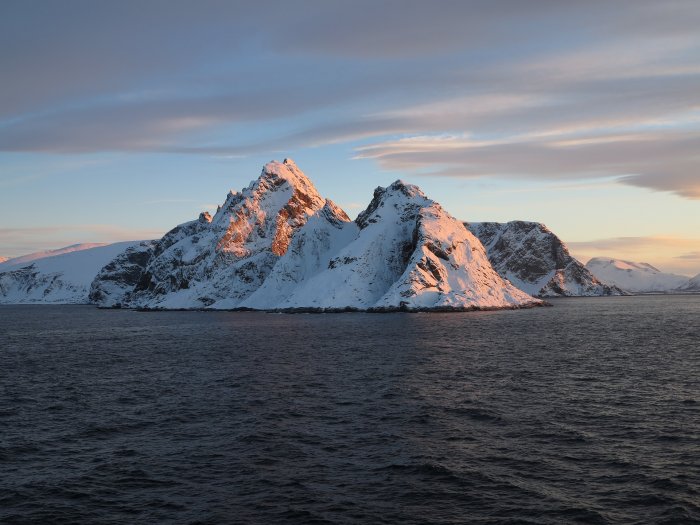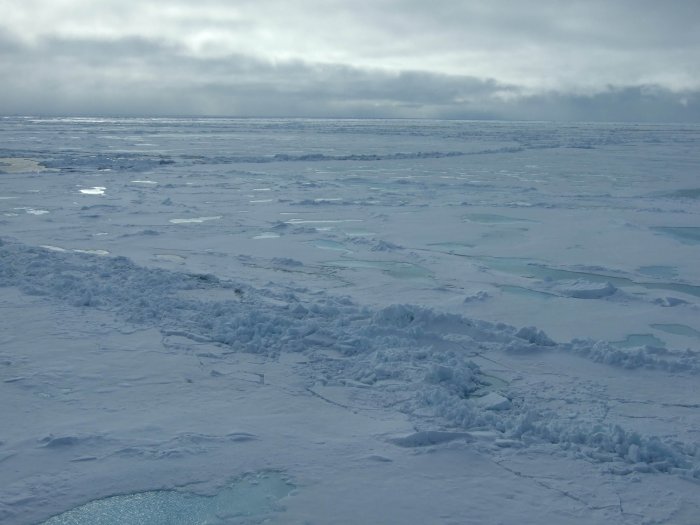Abstract
The article discusses the food security dimension facing India and tries to look at the Arctic emerging as a future agriculture hot spot as the agriculture expands northwards due to climate change. In the recent years India has been trying to make a way into the Arctic, primarily to counter the growing Chinese influence. This push has primarily been due to Geo-strategic reasons as the strategic lever that India held to contain China in the Indian ocean region through its strong control of Sea lanes of communications and strategic Naval assets in the Malacca strait is fading due to the possible opening of the Northern Sea route. This is a very strong concern in the Indian thinking circles because it enables China to bypass the Indian security architecture in the Indian ocean region. But We have all the reasons to look at all the possible areas that Arctic may open for India in the future. One such area as spelled out in the latest Arctic policy released by Government of India on 17th March 2022 is the scope of scientific cooperation. It is important to note the stress on research mentioned in this document also looks at Arctic geology. India with its growing population, rapid urbanization and changing rainfall patterns has witnessed a decline in agricultural output over years and this trend would be aggravated due to climate change. As the Arctic shows some prospects of becoming a contributor to global food security, it is worth mentioning the need to look at the region from a food security prism and start the geological research cooperation with Russia, which has the largest arctic territory and explore the feasibility of the region towards India’s food security.
Keywords: India-Russia bilateral relationship, Russian arctic, polar agriculture, Indian arctic policy, Food security, Arctic strategy, Arctic ecology
India-Russia cooperation in terms of the quality of engagements we today are a result of the “Strategic Partnership Treaty” signed in 2000. It was in the treaty from 2000 where both countries decided to realize the importance of bilateral relations and cooperation in spheres of military, security, space, nuclear science, and technology. The treaty led to institutionalization of high-level political interactions through annual bilateral summits. In 2010, the bilateral relationship was further bolstered with the signing of the “Special and Privileged Partnership”. One of the results of institutionalizing interactions has been the in Trade, and economic cooperation between the two countries has been bolstered through the India-Russia Inter-Governmental Commission on Trade, Economic, Scientific, Technological and Cultural Cooperation (IRIGC-TEC) [1]. In the area of science and technology the two countries have Working Group on Science and Technology [2], Integrated Long Term Program (ILTP) [3] and Basic Science Cooperation Program (BSCP). These frameworks form the backbone of the scientific engagement between the two countries and can be leveraged in the cooperation for Arctic scientific programs in the future. With the new Arctic policy launched by India on 17th March 2022 [4], which spells out India’s vision to undertake scientific research with the Arctic countries and its framework and scope of interaction, India can explore technical and scientific cooperation with Russia in the field of Geo-ecological studies of the Russian north to understand the Northern ecosystem and its feasibility for agriculture in the future. India and Russia can partner to develop a scientific understanding of Geo-ecological Changes Induced by Climate Change Affecting Northern Agriculture, Geo-ecological Changes Induced by Expanding and Intensified Agriculture, Induced Alteration of Local Cropping Systems, Expected Alteration of Socio-Economic Conditions, Current Policies Addressing Climate Change and Agriculture, etc.
In decades to come, climate change would put a lot of stress on India’s agricultural output. Today India is one of the largest agricultural producers in the world, but 40% of the water required for agricultural output is groundwater and this source is depleting [5]. It is projected that due to the overuse of groundwater the winter harvests in some regions of the country may fall up to two thirds by 2025. The winter harvests form up to 44 percent of the annual agricultural output for the country. On top of groundwater depletion, there's also going to be negative impacts of climate change in the coming decades. To make things worse India was home to the largest number of hungry people in the world with over 196 million people [6] (Table 1).
Table 1.
Number of undernourished people, 2017 (million)

Source: (www.fao.org/state-of-food-security-nutrition-in-the-world)
The Global Hunger Index (GHI) 2021 ranked India at the bottom with 101st position with a GHI of 27.30 (Table 2), which the index characterizes as an “alarming” food security situation [7].
Table 2.
Global Humger Index Scores By 2021 GHI Rank
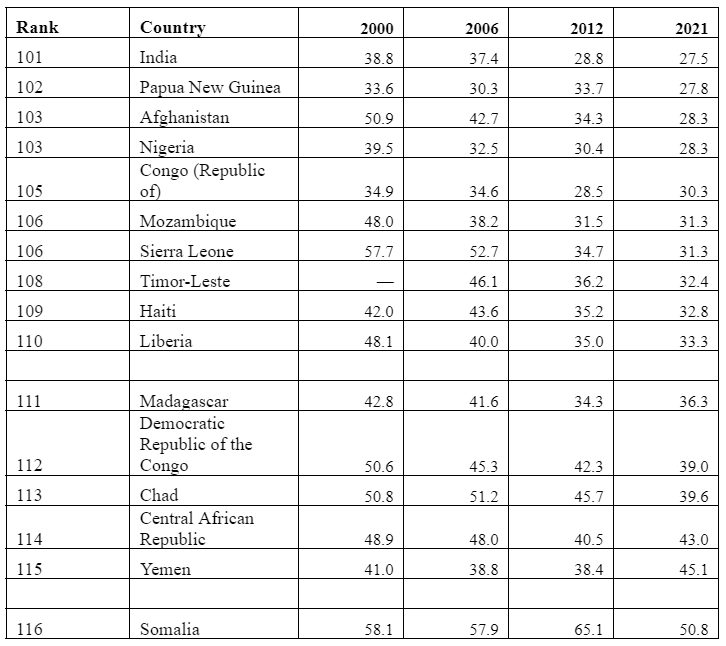
Source: (https://www.globalhungerindex.org/ranking.html)
Indian agriculture is going to be greatly affected by the consequences of climate change as India is projected to be one of the most negatively impacted countries by the climate change [8] by 2050 (Table 3).
Table 3.
Projected changes, considering 2013-14 as the baseline, in agricultural productivity from climate change in 2050

Source: (IPCC, 2014)
At a national level the Government of India may look at options to replenish groundwater table, smart agricultural practices, move from Green revolution to Gene revolution adapting the crops for new conditions, but climate change in the long run may cause systemic disruptions and in order to ensure food security, the more proactively India can initiate discussions with Russia on a scientific feasibility study and prospects to explore the Arctic as future source for India’s food security, The better it will be for India. The rapid pace of climate change means the traditional methods of adapting cropping systems and developing infrastructure are unable to keep up with the pace at which the Climate is changing. Global warming will affect social and economic sectors, including agriculture [9]. In the cold-climate Arctic regions, herein referred to as northern regions [10], climate change is occurring at a historically unprecedented rate [11] substantially affecting regional land use and the in the Arctic [12]. Climate change induced extended growing seasons will allow expansion of agriculture in the arctic and will lead to introduction of crops from warmer regions, and lead to crop diversification[13]. Following the assumptions of Cassidy et al. (2013) [14] roughly 10–20% of the arctic territory can become suitable for agriculture in the next half century [15] and be able to provide the food security needed by 0.25 to 1 billion people, which will make up for the loss in agricultural output of other regions on the planet [16]. This shift due to climate change has the potential to make Arctic agriculture becoming a net contributor to global food security. Farming above permafrost, and especially farming in the wake of permafrost melting, has been shown as possible and is predicted for Alaska and Siberia [17]. Changing precipitation patterns also favor agricultural expansion into northern Russia which will compensate for drought-related declines in cereal productivity in the southern regions [18]. The production levels in many arctic regions today are limited because they focus on relatively small local populations which can be seen also in these area’s local agri-food value chains [19]. The adoption rate of new, climate-adapted cropping systems is limited by available physical and technical infrastructure, and financial resources that can support an expanding agricultural sector [20].Examples from Russia illustrate those inadequacies of infrastructure limit northern regions' contributions to regional and national food security and sufficiency [21]. To support the overall Energy and food security which would be the broad challenges facing India in the decades to come, India should also brace towards future cooperation with Russia in the development of key infrastructure projects which should contribute and closely overlap and in essence complement the Russian government’s national Arctic development framework and India should try to position itself as a stakeholder in that vision and create a symbiotic relationship. India can look at balancing the Chinese investment in the long run and provide Russia with the much-needed diversity in investment portfolio. India can look at the Chinese model of adapting cropping systems to a changing climate, including growth of irrigated agriculture, instead of expansion for which there is limited geographic scope [22] or the Norwegian model of sustainable intensification due to limited geographical coverage [23]. In the long run due to pressure of increasing population and enhanced effects of Climate change, adaptation would have to be accompanied by expansion. The Russian arctic can be the geographic coverage India needs. But the development and implementation of these policies with the overall scope, requires a sustainable development approach of northern agriculture. Cross-sectoral needs create both challenges and opportunities. Currently there are critical knowledge gaps about the ability of the arctic regions to adapt and develop practices which can allow the region to adopt agricultural expansion, intensification, and diversification, leading to challenges for the agricultural sector to understand the complete set of relations between food security, Climate change, and preserving biodiversity. This would further take time as the sector tries to understand the impacts on agricultural production, through designing and testing agricultural practices for sustainability in the Arctic. These require research capacities and site-specific, long-term agricultural experiments, currently scarce in the northern regions [24]. India and Russia can partner in scientific studies in this area and bring it best practices from both sides and develop an understanding to solve these critical issues and work on capability gaps in the future.
Conclusions
Russia and India have shared a great bilateral relationship through their engagement in the traditional security sphere as weapons trade has formed the backbone of the partnership. It is only recently that both the countries have focused on the energy security aspect which led to India partner with Russia in the oil and gas sector. India faces tremendous challenges on its current resources due to population and resource mismanagement. This pressure would continue to mount and would get worse with the consequences of climate change. The major dependency on monsoon rainfalls, and river water originating from Himalayan glaciers would continue to be challenge in the wake of climate change. India would be able to reduce the intensity of these challenges by innovation in smart irrigation, genetically modified crops, and adaptation. But the rapid urbanization and moves towards an industrial economy would require large scale migration of workers to urban centers putting pressure on both land resources and labor. In this scenario of urbanization there may be lack of space for agriculture expansion to feed an ever-growing population. It is practical to view the solution through innovation in agricultural practices domestically, but also understanding which new spaces may become optimum for agriculture in the coming decades. India should focus at understanding the ecology in the arctic and the changes happening to that ecology due to climate change. This would form the starting point for understanding the dynamics of agriculture in the arctic followed by research in socio-economic specific of the region and integration potential to global agro-value chain. This integration would also require investments in the arctic to ensure supply chain continuity. Russia has all the potential to become a net security provider to India, not just in a traditional security sense, but also in energy security and food security. But this would require the scientific community in the agriculture and ecology domains to have the first interaction.
References
1. Tass Russian news agency website https://tass.com/economy/1371595?utm_source=yandex.ru&utm_medium=organic&utm_campaign=yandex.ru&utm_referrer=yandex.ru (accessed 03.23.22)
2) Embassy of India, Moscow webiste Available at https://indianembassy-moscow.gov.in/bilateral-relations-india-russia.php (accessed 03.23.22)
3) V.V. Shapovalenko, Shri YP Kumar Indo-Russian integrated long-term programme (ILTP). Available at https://ircb.iiita.ac.in/aboutiltp.html (accessed 03.23.22)
4) India’s Arctic Policy. Available at https://www.moes.gov.in/sites/default/files/2022-03/compressed-SINGLE-PAGE-ENGLISH.pdf (accessed 03.23.22)
5) Government of India. National Institution for transforming India. Composite Water management Index. August 2019. Available at https://www.niti.gov.in/ (accessed 03.23.22)
6) Dr R.B. Singh, Dr R.S. Paroda and Dr Malavika Dadlani Pathways for Enhancing Farmers’ Income, Nutritional Security and Sustainable Food Systems [Indian agriculture towards 2030] Available at
https://www.fao.org/fileadmin/user_upload/FAO-countries/India/docs/Full_Paper-8.pdf (accessed 03.23.22)
7. The Global Hunger Index website. Available at https://www.globalhungerindex.org/ranking.html (accessed 03.23.22)
8. The Intergovernmental Panel on Climate Change (IPCC) website https://www.ipcc.ch/report/ar5/syr/ (accessed 03.23.22)
9. Ray, D. K., West, P. C., Clark, M., Gerber, J. S., Prishchepov, A. V., and Chatterjee, S. (2019). Climate change has likely already affected global food production. PLoS ONE 14:e0217148. doi: 10.1371/journal.pone.0217148
10. King, M., Altdorff, D., Li, P., Galagedara, L., Holden, J., and Unc, A. (2018). Northward shift of the agricultural climate zone under 21st-century global climate change. Sci. Rep. 8:7904. doi: 10.1038/s41598-018-26321-8
11. Bush, E., and Lemmen, D. S. (2019). Canada's Changing Climate Report. Ottawa, ON: Government of Canada. doi: 10.4095/314614 Cassidy, E. S., West, P. C., Gerber, J. S., and Foley, J. A. (2013). Redefining agricultural yields: from tonnes to people nourished per hectare. Environ. Res. Lett. 8:034015. doi: 10.1088/1748-9326/8/3/034015
12. “World Bank Group. 2021. World Bank Group Climate Change Action Plan 2021–2025 : Supporting Green, Resilient, and Inclusive Development. World Bank, Washington, DC. © World Bank. https://openknowledge.worldbank.org/handle/10986/35799 License: CC BY 3.0 IGO.”
13. Wiréhn, L. (2018). Nordic agriculture under climate change: a systematic review of challenges, opportunities and adaptation strategies for crop production. Land Use Policy 77, 63–74. doi: 10.1016/j.landusepol.2018.04.059
14. Cassidy, E. S., West, P. C., Gerber, J. S., and Foley, J. A. (2013). Redefining agricultural yields: from tonnes to people nourished per hectare. Environ. Res. Lett. 8:034015. doi: 10.1088/1748-9326/8/3/034015
15. King, M., Altdorff, D., Li, P., Galagedara, L., Holden, J., and Unc, A. (2018). Northward shift of the agricultural climate zone under 21st-century global climate change. Sci. Rep. 8:7904. doi: 10.1038/s41598-018-26321-8
16. Asseng, S., Ewert, F., Martre, P., Rötter, R. P., Lobell, D. B., Cammarano, D., et al. (2015). Rising temperatures reduce global wheat production. Nat. Clim. Change 5:143. doi: 10.1038/nclimate2470
17. Tchebakova, N. M., Parfenova, E. I., Lysanova, G. I., and Soja, A. J. (2011). Agroclimatic potential across central Siberia in an altered twenty-first century. Environ. Res. Lett. 6:045207. doi: 10.1088/1748-9326/6/4/045207
18. Belyaeva, M., and Bokusheva, R. (2018). Will climate change benefit or hurt Russian grain production? A statistical evidence from a panel approach. Clim. Change 149, 205–217. doi: 10.1007/s10584-018-2221-3
19. Stevenson, K. T., Rader, H. B., Alessa, L., Kliskey, A. D., Pantoja, A., Clark, M., et al. (2014b). Sustainable agriculture for Alaska and the circumpolar North: Part II. Environmental, geophysical, biological and socioeconomic challenges. Arctic 67, 271–431. doi: 10.14430/arctic4408
20. Freshwater, D. (2017). Growth Beyond Cities: Place-Based Rural Development Policy in Ontario. Rural Ontario Institute
21. Swinnen, J., Burkitbayeva, S., Schierhorn, F., Prishchepov, A. V., and Müller, D. (2017). Production potential in the “bread baskets” of Eastern Europe and Central Asia. Glob. Food Secur. 14, 38–53. doi: 10.1016/j.gfs.2017.03.005
22. Yang, X., Lin, E., Ma, S., Ju, H., Guo, L., Xiong, W., et al. (2007). Adaptation of agriculture to warming in Northeast China. Clim. Change 84, 45–58. doi: 10.1007/s10584-007-9265-0
23. Hohle, E. E., Lyssandtræ, F., Orlund, K., Næss Killingland, R. K., Mortensen, P., Kvam, R. S., et al. (2016). Agriculture and Climate Change. Working Group Report (Landbruk og klimaendringer. Rapport fra arbeidsgruppe). Ministry of Agriculture and Food (Landbruks- og matdepartementet)
24. Sandén, T., Spiegel, H., Stüger, H. P., Schlatter, N., Haslmayr, H. P., Zavattaro, L., et al. (2018). European long-term field experiments: knowledge gained about alternative management practices. Soil Use Manage. 34, 167–176. doi: 10.1111/sum.12421
This is an open access article distributed under the terms of the Creative Commons Attribution License (CC-BY 4.0)
